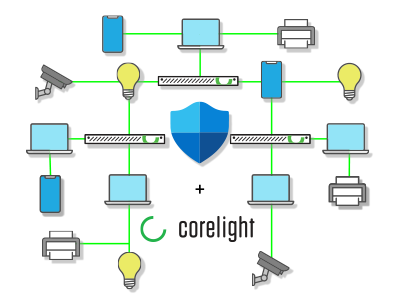Security | Threat Detection | Cyberattacks | DevSecOps | Compliance
Technology
Zero Trust? Don't Forget Your Mobile Fleet
How to Harden Your Cloud Environment in 5 Steps
In recent years, with the rapid rise of cloud computing, the virtualization of applications and infrastructure has been replacing traditional in-house deployments of applications and services. It’s currently more cost-effective for organizations to rent hardware resources from companies like Microsoft, Amazon, and Google and spin up virtual instances of servers with the exact hardware profiles required to run their services.
Microsoft + Corelight partner to stop IoT attacks
When you hear the term “Internet of Things,” (IoT) do you picture home devices like lightbulbs, smart assistants, and wifi-connected refrigerators? Perhaps you think of enterprise devices like video conferencing systems, smart sensors, or security cameras? Or maybe traditional office equipment like VoIP phones, printers, and smart TVs come to mind. No matter what devices you imagine, IoT represents an ever-expanding attack surface.
Leveraging Artificial Intelligence for Impactful Cybersecurity
Artificial intelligence (AI) is reinventing the trajectory of cybersecurity and fighting with a double-edged sword. If harnessed correctly, AI can automatically generate alerts for emerging threats, detect new types of malware, and protect sensitive data. While it has advanced us into a plethora of new technologies -- think Siri, facial recognition, and Google’s search engine -- it has also probed us with significant threats from cybercriminals.
Protecting Users from Malicious Sites with Falcon for Mobile
Lookout Data Shows Already Strained Energy Industry Faced With 161% Surge in Mobile Phishing
A few months ago, the largest U.S. pipeline operator, Colonial Pipeline, was forced to halt operations for nearly a week due to a ransomware attack. While it ultimately didn’t stop consumers from buying gasoline, the incident forced the company to pay $4.4 million in ransom payment and illustrated just how vulnerable energy organizations are to cyberattacks.
Secure your infrastructure from code to cloud
Netskope Cloud Exchange
Egnyte Releases Open Source Bandwidth Limiting Plugin
Bandwidth pricing is a major component of the cloud services model. And for a content-heavy service like a video or document store, egress costs can quickly spiral out of control. To mitigate this, it is important to put limits on the amount of data that can be downloaded in a given interval. However, bandwidth limiting for a multi-tenant SaaS product adds a few interesting challenges.











